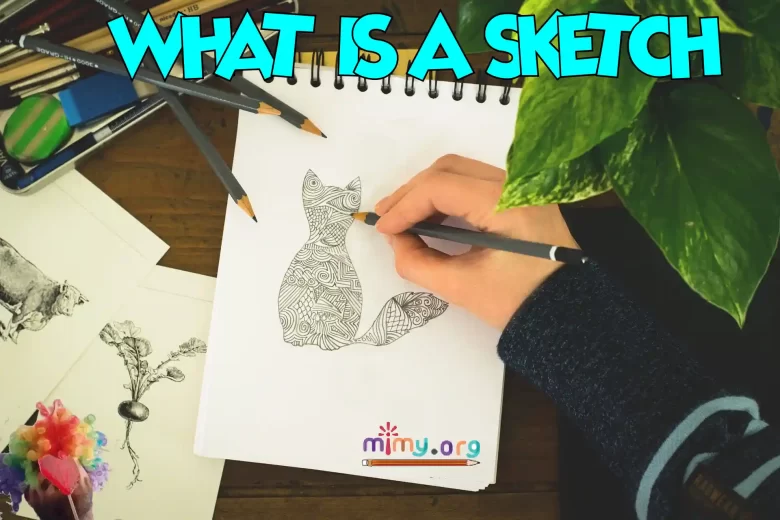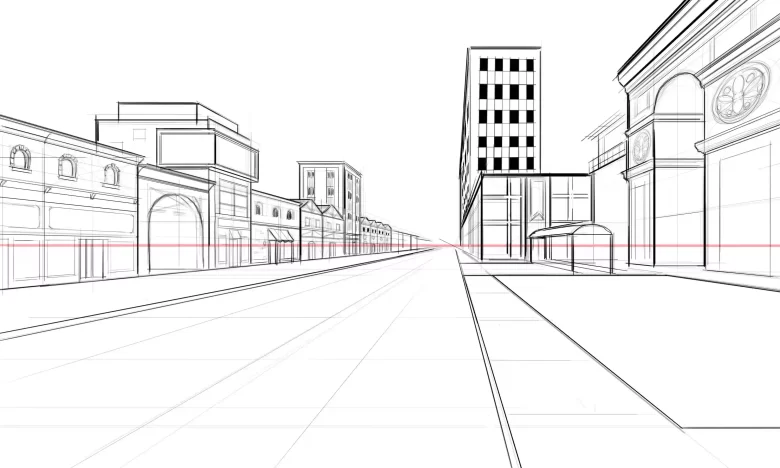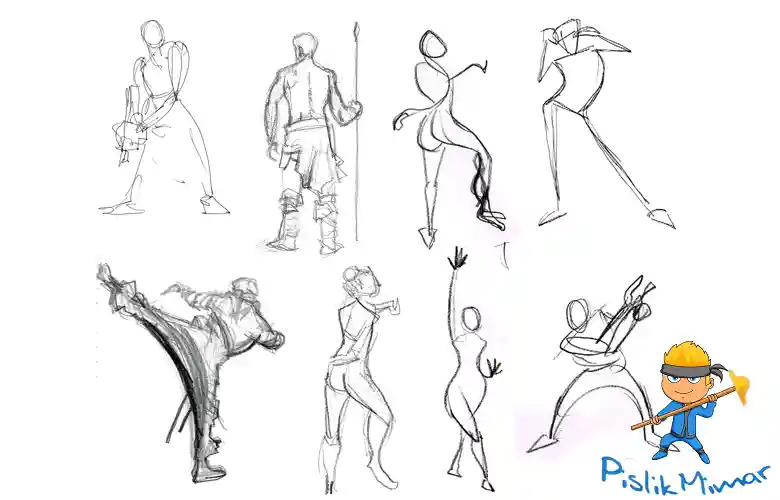What is a Sketch? Unveiling the Art Behind the Lines
Curious about sketches? Discover what a sketch is, its types, purposes, and tips to create your own. Dive into the art of sketching with our complete guide!
Have you ever caught yourself staring at a doodle on a napkin and wondered, “Wait, what is a sketch exactly?” You’re not alone. Sketching is one of those magical art forms that seem deceptively simple yet hold an entire universe in every stroke. From casual doodles to detailed preliminary drawings for masterpieces, sketches have been a cornerstone of artistic expression for centuries.
In this article, we’re going to explore what a sketch is, why it matters, and how you can embrace the beauty of sketching in your own creative journey. So, buckle up, and let’s dive into the world of lines, shades, and imagination!
What is a Sketch?
At its core, a sketch is a quick, freehand drawing that captures the essence of an idea, object, or scene. Unlike fully polished artworks, sketches are often rough, spontaneous, and experimental. Think of them as visual notes—little snippets of creativity jotted down before committing to a full masterpiece.
You can find drawing tutorials and easy drawing ideas on the Easy Drawings page regarding Sketch Drawing.
Key Characteristics of a Sketch
- Quick Execution: Sketches are meant to be fast, not perfection.
- Rough Lines: Imperfections are part of the charm.
- Expressive: A sketch conveys mood and motion rather than fine detail.
- Experimental: It’s a playground for ideas, allowing artists to try new concepts.
The History of Sketching
Believe it or not, sketching dates back thousands of years. Ancient humans left sketches on cave walls, using simple tools to record daily life, hunt scenes, and spiritual symbols. Over centuries, sketches evolved from rough notes to detailed preparatory drawings in Renaissance art. Artists like Leonardo da Vinci and Michelangelo used sketches to plan their masterpieces, proving that these seemingly “unfinished” works hold immense value.
Types of Sketches
There’s no one-size-fits-all when it comes to sketches. Let’s break down the main types:
1. Thumbnail Sketches
Tiny, quick sketches that explore composition and layout. Perfect for planning without committing to full-scale drawing.
2. Contour Sketches
Focuses on the outline of an object or scene. Often done without lifting the pencil from the paper, contour sketches train your observation skills.
3. Gesture Sketches
Captures movement and energy in a subject. Think of a dancer mid-spin or a dog leaping in the park. These sketches are all about flow and rhythm.
4. Perspective Sketches
Used to represent three-dimensional space on a flat surface. Architects, designers, and concept artists use this type extensively.
5. Technical or Detailed Sketches
More refined than quick sketches, these include intricate details and are often used as preparatory work for larger projects.
Why Sketching Matters
You might wonder, “Isn’t sketching just for artists?” Not at all! Sketching offers benefits beyond the art world.
Cognitive Benefits
- Enhances observation skills
- Boosts memory retention
- Stimulates creativity
Emotional Benefits
- Relieves stress and anxiety
- Encourages mindfulness
- Serves as a form of self-expression
Professional Benefits
- Useful in architecture, fashion, and product design
- Helps in brainstorming and visualizing ideas
- Facilitates communication when words fall short
Tools and Materials for Sketching
You don’t need a fancy studio to start sketching. Here’s what most beginners and professionals use:
- Pencils: Ranging from soft (B) to hard (H) for different effects
- Erasers: Kneaded or rubber
- Paper: Sketchbooks, pads, or even scrap paper
- Pens & Ink: For more defined, lasting sketches
- Digital Tools: Tablets and stylus for digital sketching
How to Start Sketching: A Beginner’s Guide
Feeling inspired yet? Let’s break down the process:
- Start Small: Don’t pressure yourself to create masterpieces immediately.
- Observe: Look at objects, people, or scenes with fresh eyes.
- Practice Regularly: Even 10 minutes a day can improve your skills.
- Experiment: Try different styles, materials, and techniques.
- Accept Mistakes: Every line, smudge, or wobble is part of learning.
Common Mistakes to Avoid in Sketching
- Overthinking every line
- Skipping basic shapes and proportions
- Being too harsh on yourself for “imperfect” sketches
- Sticking to only one medium or style
Remember, sketches are supposed to be rough and experimental!
What is a Sketch? Exploring the Creative Mind
One fascinating thing about sketches is how they reveal the artist’s thought process. Unlike finished paintings or digital art, sketches are raw and intimate. They show trial, error, imagination, and the evolution of an idea. In many ways, a sketch is a window into the creative mind—a glimpse of how a thought transforms into reality.
FAQs About Sketching
Q1: Can anyone learn to sketch?
Absolutely! Sketching isn’t about talent—it’s about observation, practice, and creativity.
Q2: Do I need expensive tools to start?
Not at all. Pencil and paper are enough. You can upgrade as you go.
Q3: How long should I sketch each day?
Even 10–20 minutes daily can make a huge difference over time.
Q4: What’s the difference between a sketch and a drawing?
A sketch is usually quick, rough, and experimental, while a drawing is more refined, detailed, and finished.
Q5: Can sketching help with other skills?
Yes! It enhances observation, problem-solving, memory, and even emotional expression.
Conclusion
So, what is a sketch? It’s more than just a rough drawing—it’s a playground for ideas, a tool for creativity, and a bridge between imagination and reality. Whether you’re an aspiring artist, a designer, or someone looking for a stress-relieving hobby, sketching offers endless possibilities.
Don’t be afraid to pick up that pencil, embrace the smudges, and let your ideas flow freely. Remember, every great masterpiece started with a simple sketch. So go ahead, explore, experiment, and most importantly—have fun with it!






